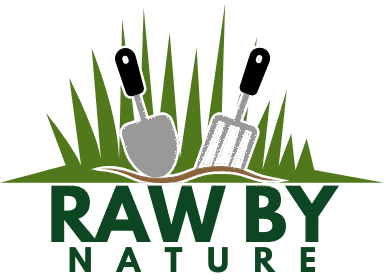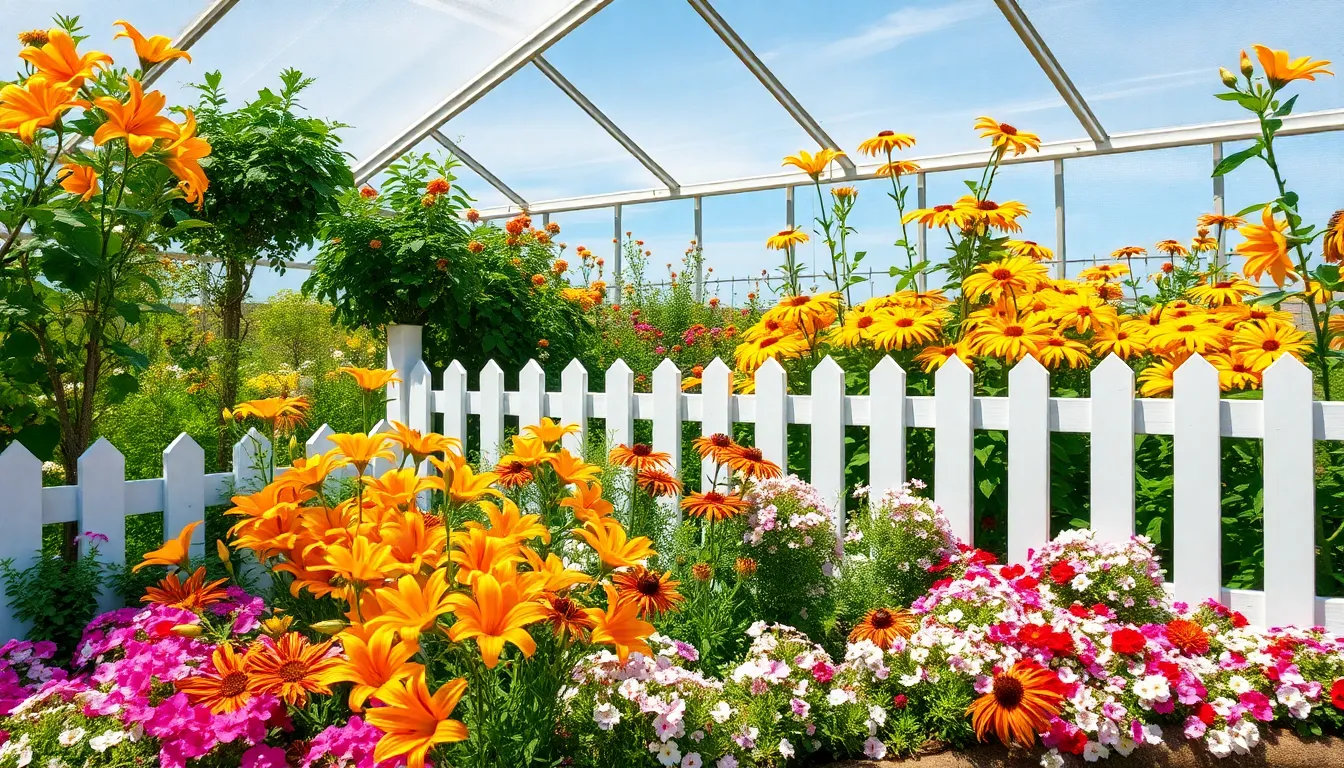In the world of gardening, few things bring as much joy as a garden that blooms in every season, offering a continuous tapestry of color and life. For both budding gardeners and seasoned green thumbs, the allure of perennials that bloom year-round is undeniable, promising a vibrant display that requires a touch less maintenance than their annual counterparts. This article is your gateway to discovering the magic of these perennial wonders, demystifying the process of selecting and caring for plants that will reward you with their enduring beauty.
Understanding how to cultivate a garden that thrives throughout the year empowers you to transform any outdoor space into a personal oasis. By choosing the right perennials, you not only enhance the aesthetic appeal of your garden but also create an environment that supports biodiversity and sustainability. Whether you’re starting with a blank slate or looking to enrich an existing garden, you’ll find practical advice on plant selection, soil preparation, and seasonal care that suits every level of expertise.
Join us as we explore a curated selection of perennials renowned for their resilience and beauty, each with unique characteristics that cater to various climates and gardening styles. Along the way, you’ll learn about the importance of understanding plant hardiness, the art of companion planting, and how to tailor your gardening practices to your region’s specific needs. Our goal is to equip you with the knowledge and confidence to cultivate a garden that not only pleases the eye but also nurtures the spirit, inviting you to enjoy the simple pleasures of gardening every day of the year.
Choosing Year-Round Blooming Perennials
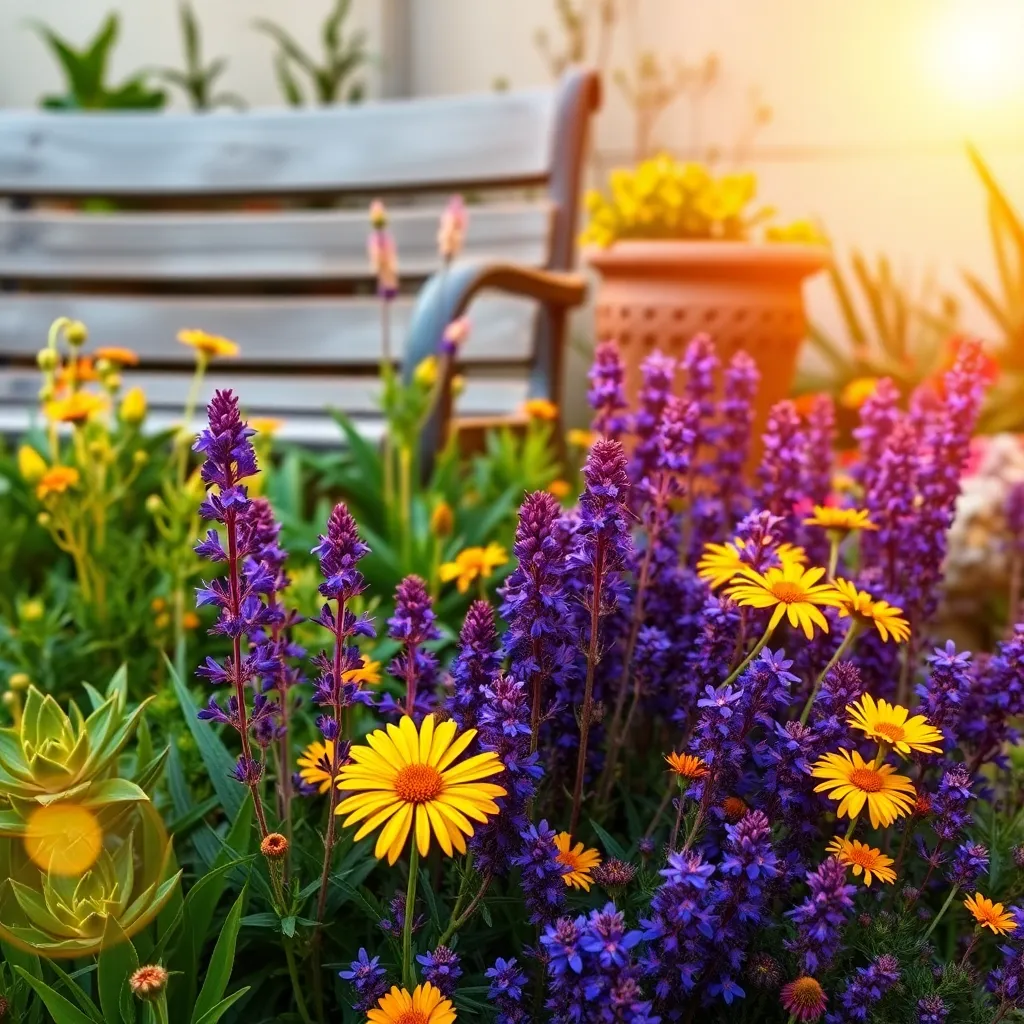
When choosing perennials for year-round blooms, it’s essential to consider plants that thrive in a variety of climates. Many gardeners find success with plants like the Lantana, which offers colorful blooms across different seasons.
Begin with assessing your garden’s soil type and sunlight exposure, as these factors significantly impact plant selection. Most year-round blooming perennials prefer well-drained soil and at least six hours of sunlight each day.
To ensure continuous blooms, it’s crucial to incorporate deadheading into your routine. Regularly removing spent flowers encourages plants to produce more blooms, maintaining their vibrant display.
Consider planting a mix of early, mid, and late-season bloomers to cover all bases. This strategy not only extends the flowering period but also adds diversity and resilience to your garden.
For more advanced gardeners, experimenting with companion planting can enhance growth and flowering. Pairing perennials with different root depths or nutrient needs can optimize space and resources.
Top Varieties for Continuous Color
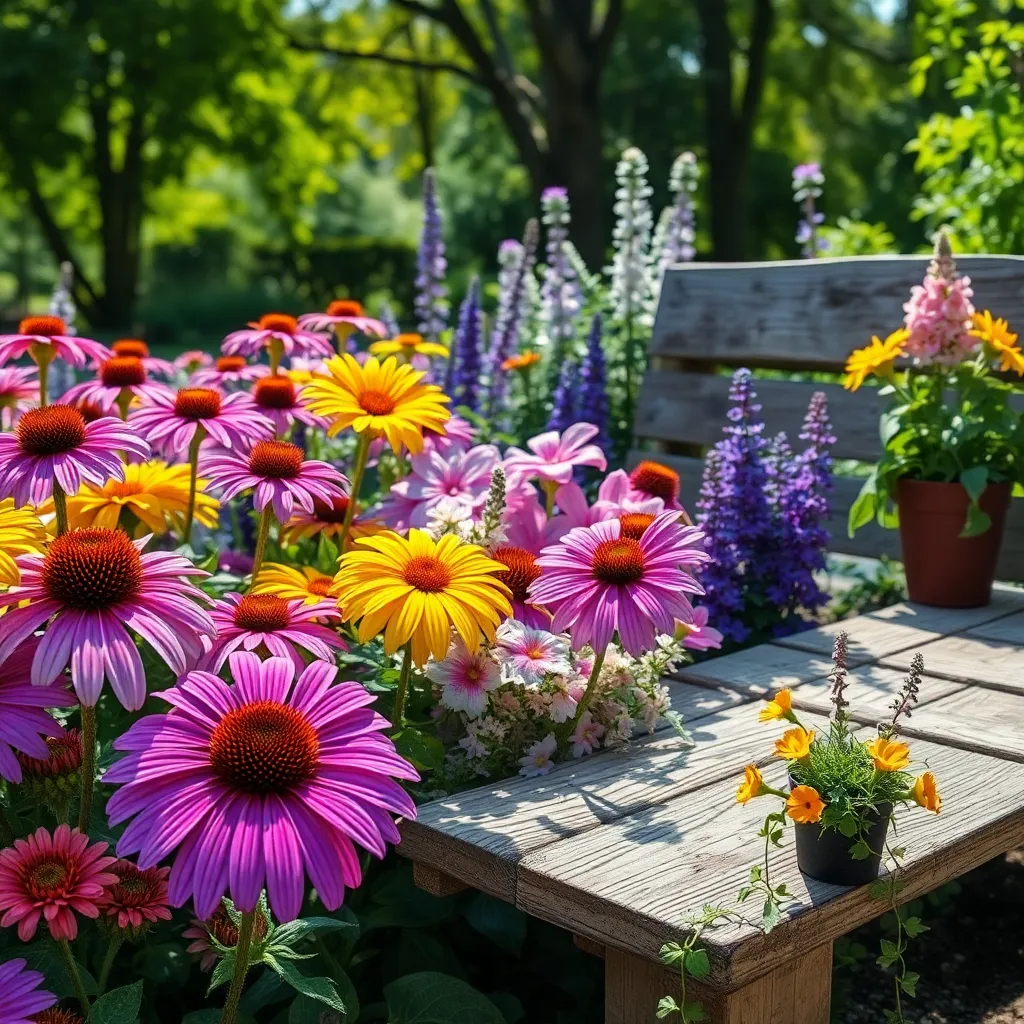
For vibrant color throughout the year, consider adding Japanese Anemones to your garden. These hardy perennials thrive in partial shade and prefer moist, well-drained soil, making them a versatile choice for many environments.
Another excellent choice is Coreopsis, known for its daisy-like flowers that bring a cheerful vibe. Plant them in full sun and ensure the soil is well-draining for the best results, and watch them flourish with minimal care.
Rudbeckia, or Black-Eyed Susan, is a staple for continuous color and requires minimal upkeep. They prefer full sun and can tolerate a range of soil types, though they do best in moderately fertile soil.
To add a touch of elegance, consider Daylilies, which are known for their ability to bloom repeatedly. These perennials thrive in full sun to partial shade and require regular watering, especially during dry spells, to maintain their vibrant blooms.
Planting Strategies for Maximum Impact

To create a garden that offers visual delight throughout the year, it’s essential to use strategic planting techniques. Begin by choosing a mix of perennials that complement each other in height, texture, and color to maintain interest in every season.
Consider planting taller perennials like delphiniums or hollyhocks at the back of your garden beds. These plants provide a stunning backdrop and can help create a tiered effect when paired with medium and low-growing varieties.
For gardeners aiming for a lush and vibrant garden, densely plant perennials to minimize bare soil and reduce weeds. This not only conserves moisture but also encourages healthier growth by promoting a microclimate that supports diverse plant life.
Soil health is paramount for thriving perennials. Use a well-draining soil blend rich in organic matter to ensure your plants have the nutrients they need to bloom continuously.
Watering strategies are crucial, especially in the early stages of growth. Water deeply but infrequently to encourage root systems to grow deeper, making plants more resilient during dry spells.
For advanced gardeners, consider experimenting with companion planting. Some perennials, like lavender and rosemary, repel pests naturally and can be planted alongside more delicate species to protect them.
Lastly, regularly deadhead spent blooms to prolong flowering periods and maintain a tidy appearance. This simple practice not only enhances the garden’s aesthetics but also encourages further blooming by redirecting the plant’s energy from seed production to new growth.
Maintenance Tips for Ever-Blooming Gardens
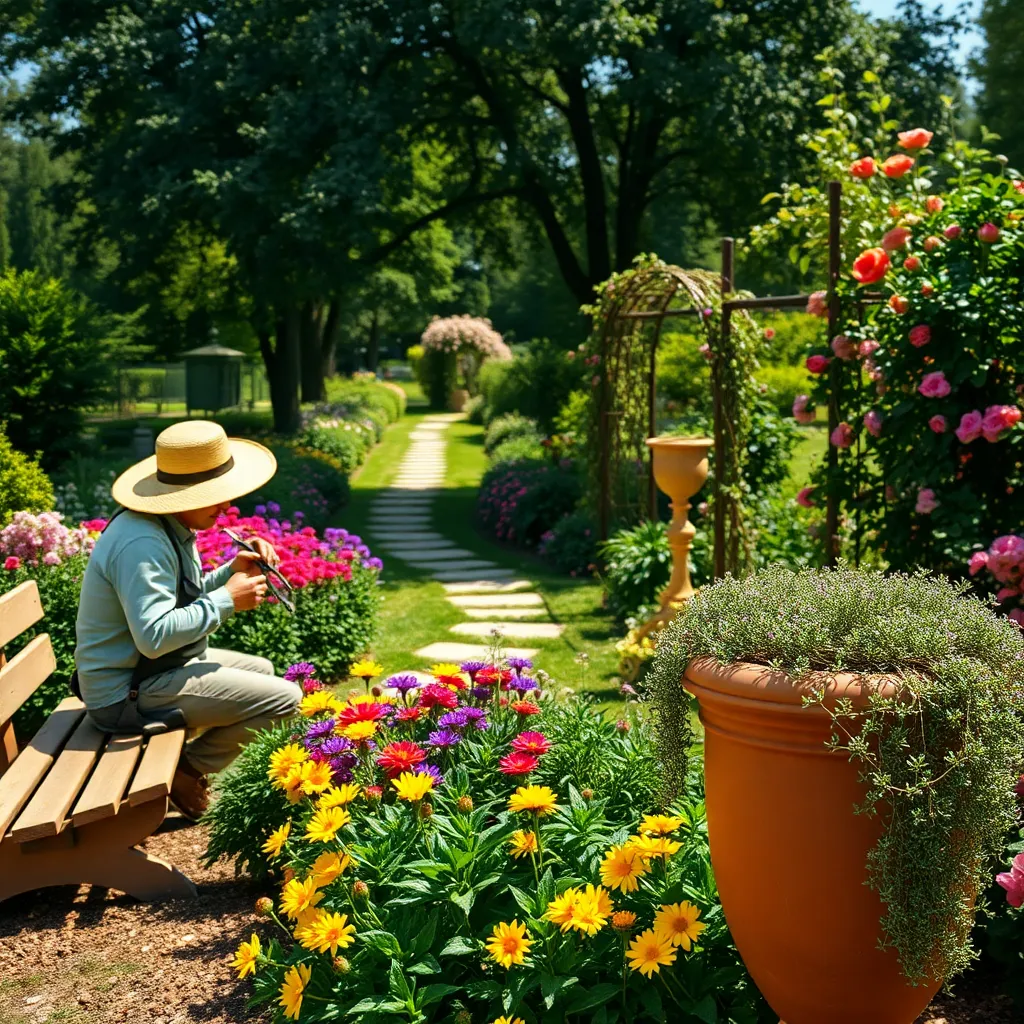
Maintaining an ever-blooming garden requires consistent care and attention. One of the most important tasks is regular deadheading, which involves removing spent flowers to encourage continuous blooming. This simple practice helps redirect the plant’s energy towards producing more blooms instead of seed production. As a general rule, deadhead your perennials frequently, using clean, sharp shears to prevent any damage to the plant.
Watering practices can significantly impact the health of your perennial garden. Most perennials thrive with deep, infrequent watering, allowing the soil to dry out slightly between sessions to prevent root rot. For beginners, a moisture meter can be an invaluable tool to ensure you’re not over or under-watering your plants. More advanced gardeners might consider installing a drip irrigation system to automate watering and reduce water wastage.
Soil health plays a crucial role in the longevity and vibrancy of your blooms. Ensuring your soil is well-draining and rich in organic matter can foster healthier root systems and more robust plants. To boost soil fertility, apply a balanced, slow-release fertilizer in early spring and mid-summer. This not only feeds your plants but also supports microbial life in the soil, which is essential for nutrient uptake.
Pruning is an advanced technique that helps maintain plant shape and encourages new growth. While not all perennials require pruning, those that do benefit greatly from it when done correctly. Prune in late winter or early spring before new growth begins, focusing on removing any dead or damaged stems. This practice can lead to more vigorous flowering and healthier plants overall, providing a lush and ever-blooming garden.
Companion Plants to Enhance Perennials
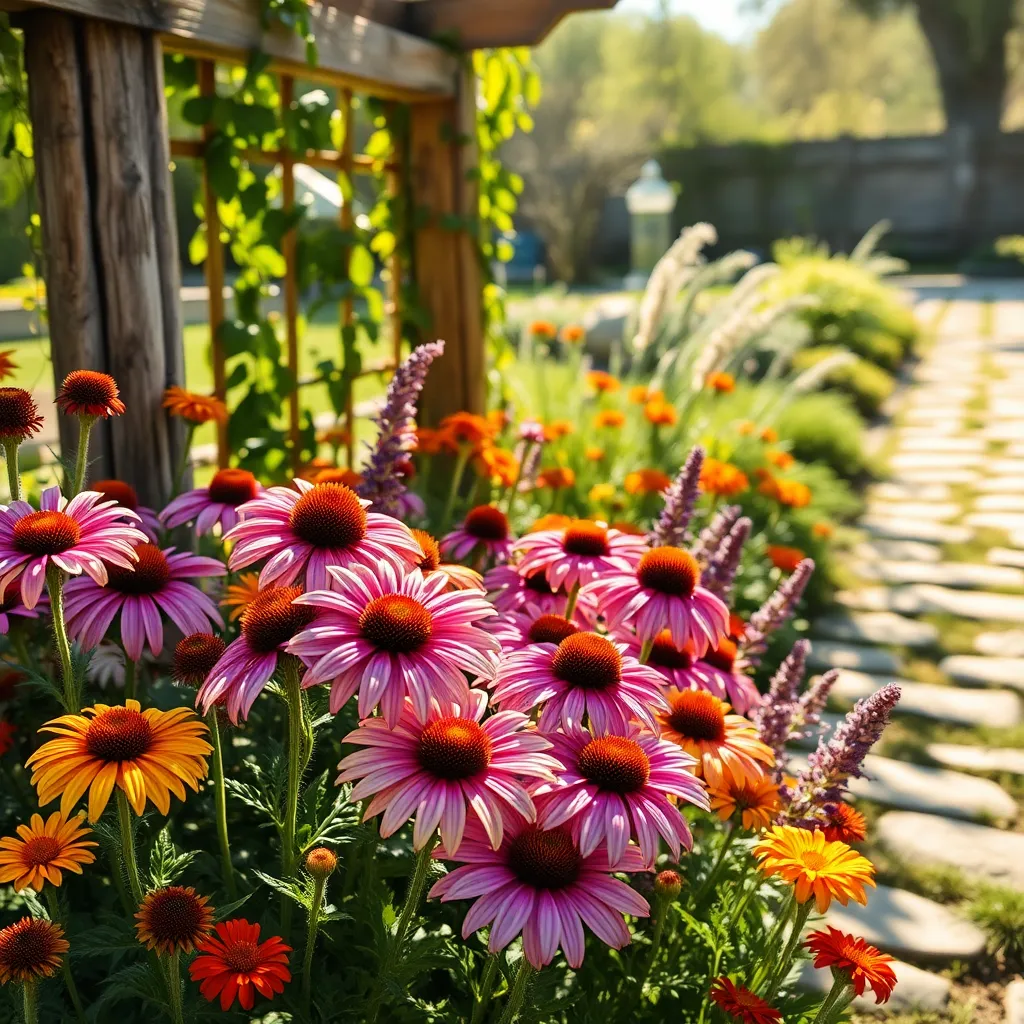
Pairing perennials with companion plants can significantly enhance their growth and flowering potential. Choose companions that share similar light and soil requirements to create a thriving garden ecosystem.
For sun-loving perennials like coneflowers and black-eyed Susans, consider planting alongside lavender or yarrow. These companions not only attract beneficial insects but also repel pests that might inhibit perennial growth.
In shady areas, hostas and ferns thrive when paired with astilbes, which add a splash of color with their feathery plumes. Ensure the soil is consistently moist but well-draining to keep these shade-lovers healthy.
Experienced gardeners might explore using companion plants to control soil moisture and nutrients. Planting comfrey near perennials can improve soil structure with its deep roots and add nitrogen when its leaves are used as mulch.
To suppress weeds and reduce maintenance, use ground covers like creeping thyme around the base of taller perennials. This not only provides a natural weed barrier but also releases a pleasant aroma when walked upon.
For those looking to experiment further, interplanting with herbs such as basil or dill can enhance the flavor of nearby vegetables. This technique benefits both the perennials and the herbs, creating a symbiotic relationship in your garden.
Conclusion: Growing Success with These Plants
In ‘Perennials That Bloom All Year Long,’ we explored five key relationship concepts that can keep love flourishing throughout the seasons. First, we discussed the importance of cultivating resilience, emphasizing that weathering storms together strengthens bonds. Next, we highlighted the role of open communication in nurturing understanding and trust. Third, we delved into the art of compromise, reminding us how mutual respect and flexibility pave the path to harmony. Fourth, we explored the necessity of shared goals, which align visions and create lasting partnerships. Lastly, we underscored the power of appreciation and gratitude in deepening emotional connections.
As your next step, take a moment today to express gratitude to your partner for something small yet meaningful—it’s a simple gesture that can reignite warmth and affection. To ensure these insights continue to guide you, bookmark this article as your go-to relationship resource. By doing so, you’ll have a toolkit ready to revisit whenever you need a reminder of how to cultivate enduring love.
Remember, nurturing a relationship is an ongoing journey, and with these strategies, you are well-equipped to ensure your love blooms brightly year-round. Embrace the adventure with optimism—your efforts today lay the foundation for a thriving partnership tomorrow.
